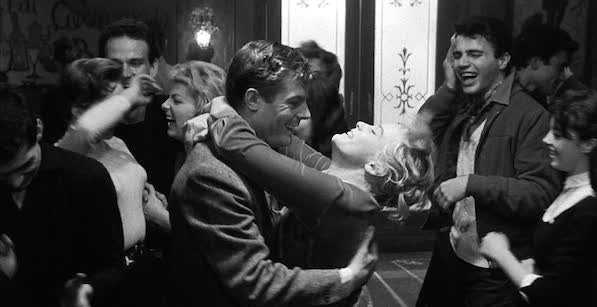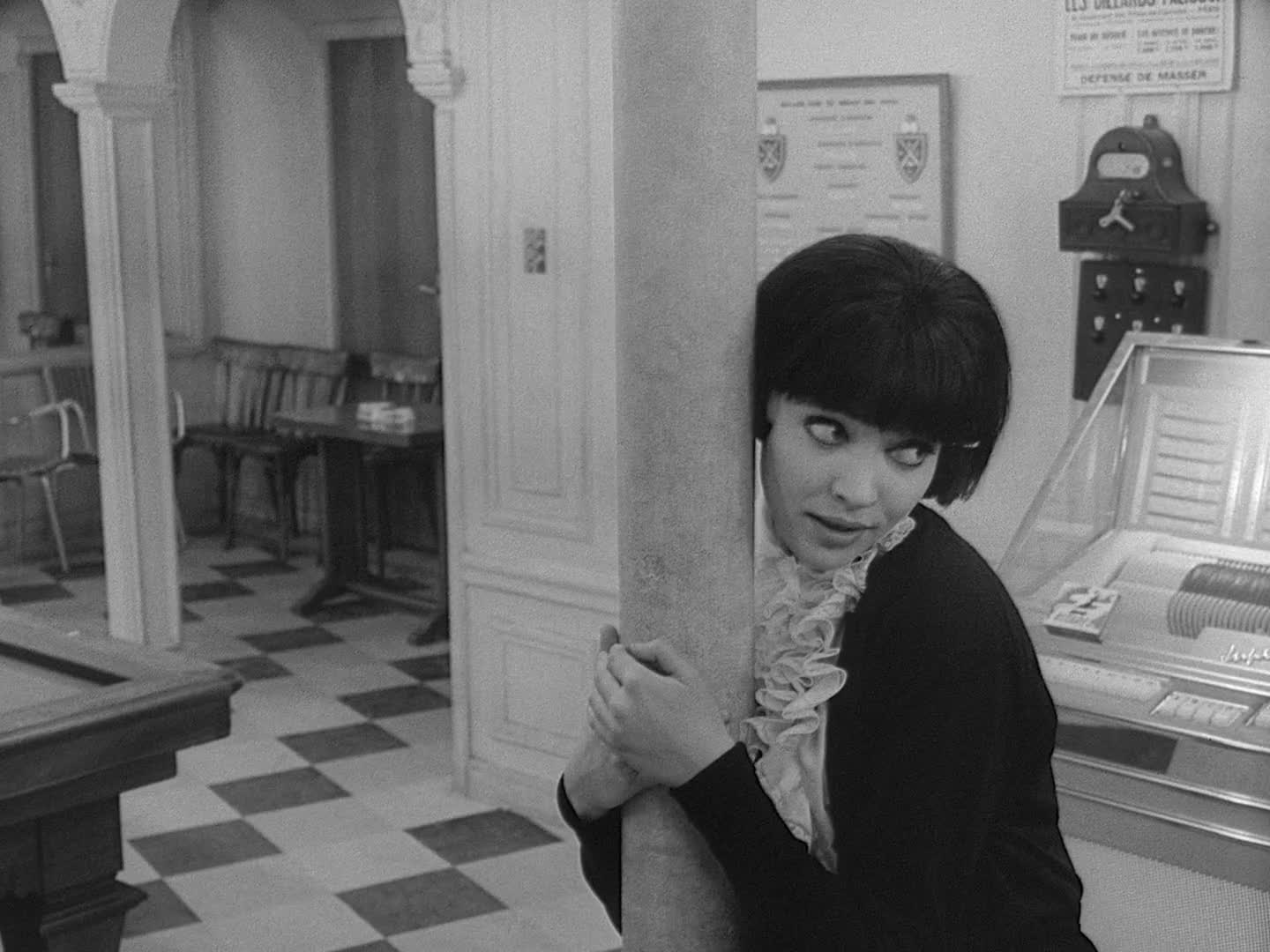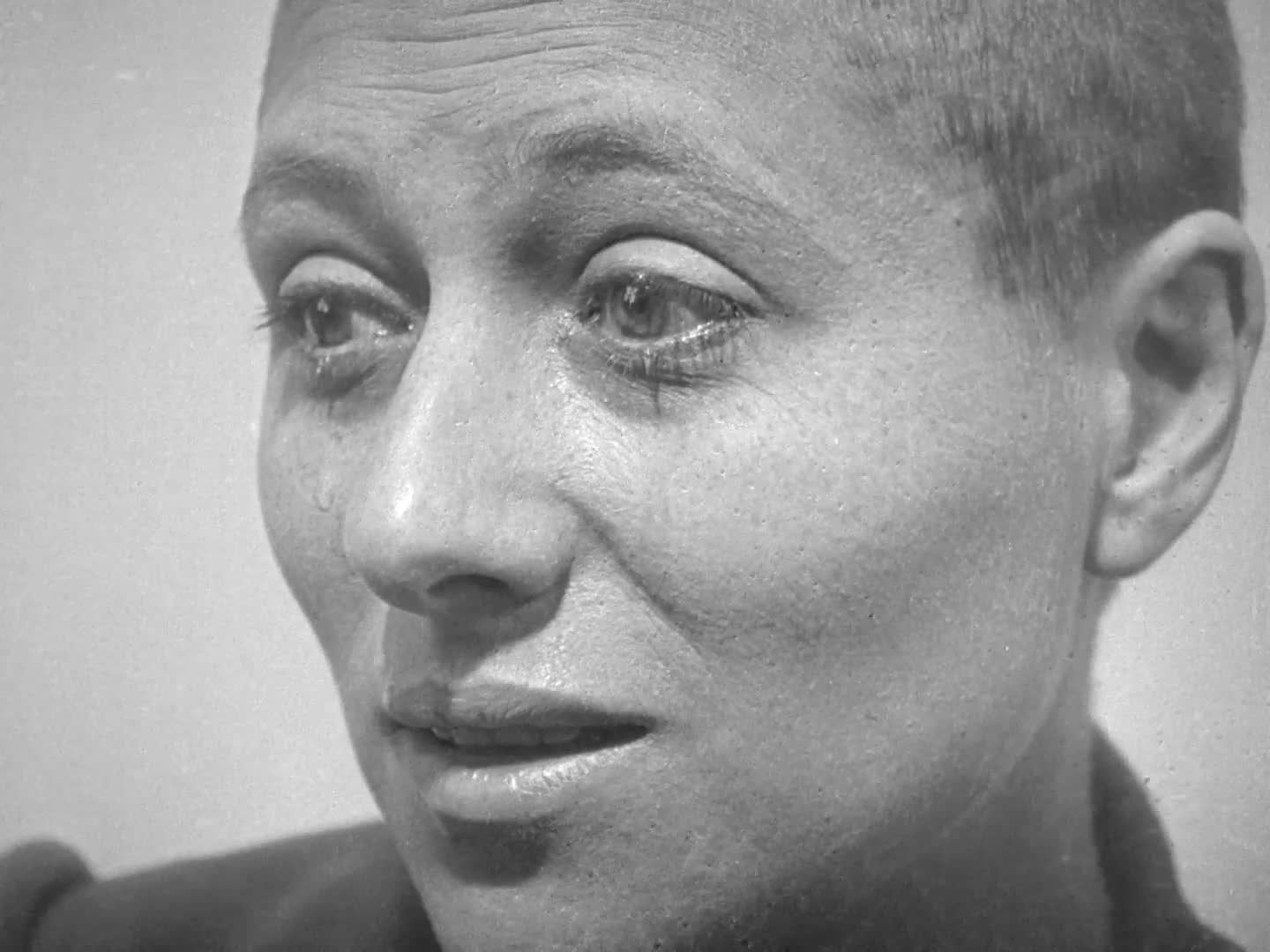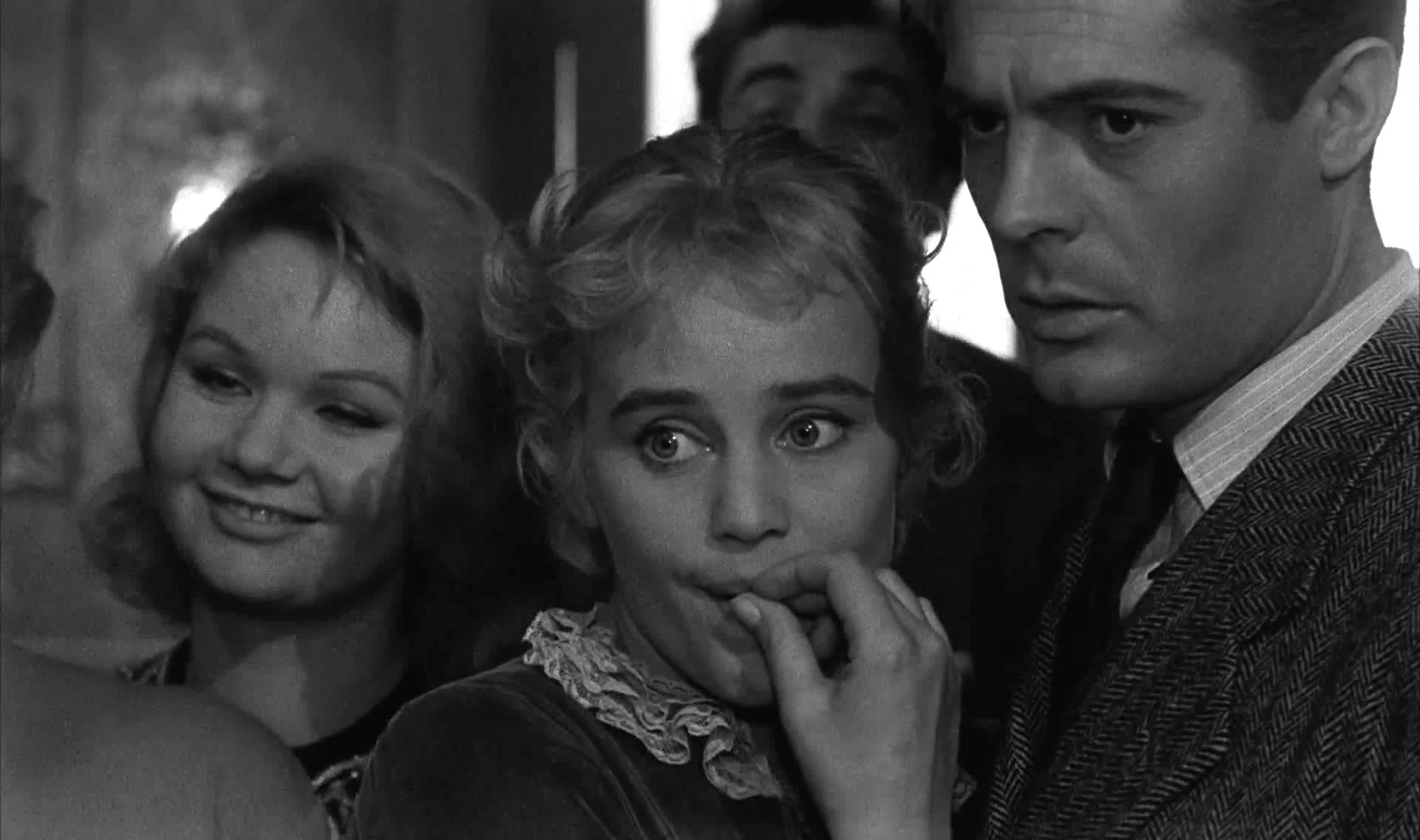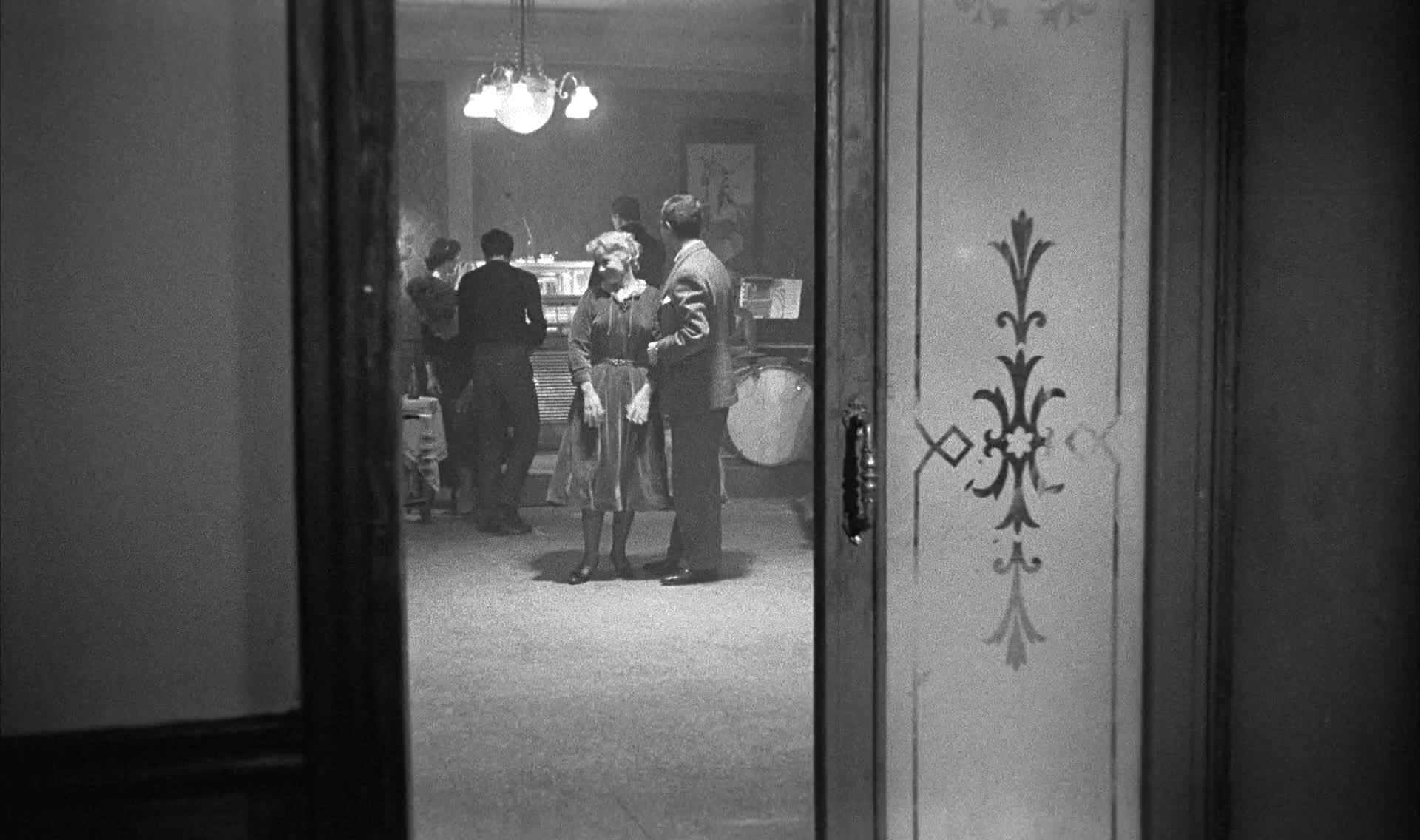[Editor’s note: This piece focuses on films from the Criterion Collection now playing for a limited time on Fandor.]
Like many film projects of Jean-Luc Godard, Vivre sa Vie (1962) is held together—more sturdily than much of his work—by the tension between opposing artistic impulses. On the one hand, it was devised and shot very quickly, almost in the manner of reportage—Godard had been perusing sociological studies of the period concerning how easily Parisian women could drift into prostitution, once financial hardship hit. Hence the sketchy tale of Nana (Anna Karina), from relationship breakdown to bitter end, was born.
On the other hand, this is among the most formal and composed of Godard’s films, in its images and sounds, and in narrative construction: episodes or scenes from a “decline and fall” melodrama, the content of which is labeled and spelt out in advance in soberly Brechtian intertitles. Godard was still some years away from the full flowering of his political consciousness, but already here a bleak view of society is developed: everybody the camera examines is actually or potentially either pimp, whore or client in this go-round of need and consumption.
And yet, for all that, it is a stunningly lyrical film, giving us some of Godard’s most achieved scenes, balanced between (to use the words of philosopher Simone Weil) “gravity and grace.” And never more so than in Nana’s entrancing dance around a pool hall to the tune of a generic pop instrumental confected by Michel Legrand (“swing, swing, swing!,” its chorus helpfully exhorts). It’s in moments like these we recall the wise words of the late, great critic Gilberto Perez, from his book The Material Ghost: “The lyricism celebrates the triumph, the pathos laments the defeat of the soul that would assert itself, the tenderness that would gain embodiment, the freedom that would achieve realization.”
In a prescient Cahiers du cinéma piece from 1962, the brilliant critic/video artist Jean-André Fieschi (1942-2009) admiringly called Godard a vampire—for the already familiar way he “borrowed so boldly” from other films. But Fieschi took the idea further and deeper, proposing that vampirism is among “the greatest myths of all cinema and literature,” and that Vivre sa Vie “plunges directly and without the mediation of a fantasy premise” into its wellspring. “A film about absorption: shadow absorbs light a dozen times (the gradual blackouts); death absorbs life. Likewise Godard absorbs the world and is finally himself absorbed by his creation…”
It’s no surprise that contemporary masters of video and installation art, including Harun Farocki and Atom Egoyan, have been so drawn to commenting on or reworking Vivre sa Vie. The film offers itself as a series of distinct “tableaux” that can easily be re-imagined as separate screens in a gallery. As every true cinephile knows, Godard goes so far as to stage the viewing of a classic film (Carl Theodor Dreyer’s The Passion of Joan of Arc, 1928) inside his own, Falconetti’s anguish prompting Karina’s tears to roll—and Egoyan added a few more, multi-media layers to that Chinese Box in his dazzling short, Artaud Double Bill (2007).
* * *
The story of almost every major Italian director in the 1950s is their sometimes uneasy negotiation with—and drive to break away from—the imposing legacy of 1940s neorealism. By 1957, Luchino Visconti had already made his operatic aspirations perfectly clear in Senso (1954). But Le notti bianche (1957), an adaptation of Dostoevsky’s oft-filmed tale “White Nights”—Robert Bresson (Four Nights of a Dreamer, 1971) and James Gray (Two Lovers, 2008) have given us their equally personal, customized takes on its basic plot template—still managed to throw many critics of the time for a loop.
On the one hand, Visconti had returned to the joys and sorrows of ordinary people in something resembling everyday life—and he observed their social context in meticulous detail. On the other hand, Le notti bianche flaunted its high degree of artificiality: completely constructed and filmed on a set, controlling every aspect of weather and environment for purely expressive and poetic purposes. Unsurprisingly, its combination of storybook artifice and bittersweet melancholia had a particular impact on one budding filmmaker soon to launch his debut feature: Jacques Demy.
Of all Visconti’s films, this is the one least concerned with large questions of European historical and political transition, of the kind we see so vividly dramatized in The Leopard (1963) or The Damned (1969). Its agony is intimate, tracing the largely unrequited longing that Mario (Marcello Mastroianni) feels for Natalia (Maria Schell)—who, while letting herself be entertained for a few nights by Mario, only pines for her dream-man (Jean Marais) to return, if he ever will…
As in Vivre sa Vie, a dance scene takes prime position in Le notti bianche’s unfolding chronicle. And what a dance scene it is! As I have argued in my recent book Mise en scène and Film Style (Palgrave, 2014), this eleven-minute extravaganza is a set-piece that sums up what many people mean by the term “classical mise en scène” when they refer to 1950s work by Vincente Minnelli, F.W. Murnau, or Kenji Mizoguchi. In the light of his later work, Visconti is often regarded—inaccurately, in my view—as a director whose method is based on excess, pure spectacle and proudly superfluous detail. But no touch is superfluous in Le notti bianche, and least of all in this central scene.
In a club, Mario tries to draw Natalia’s attention, to make himself irresistible to her through reminiscences and confessions. But as the dancers hit the floor around them, literally intruding into their “personal space,” Natalia is increasingly distracted and Mario realizes that his amorous campaign is lost—unless he gets her out of her seat to join the throng. Here, too, Mario tries to engineer intimacy—but Visconti throws every possible obstacle in his way, from the club’s star show-off dancer (Dirk Sanders) to the changing lights and spaces of the room. Finally, Natalia flees, once more in search of her fantasy—and Mario is stuck with the unbearable tension of pathos and defeat.

